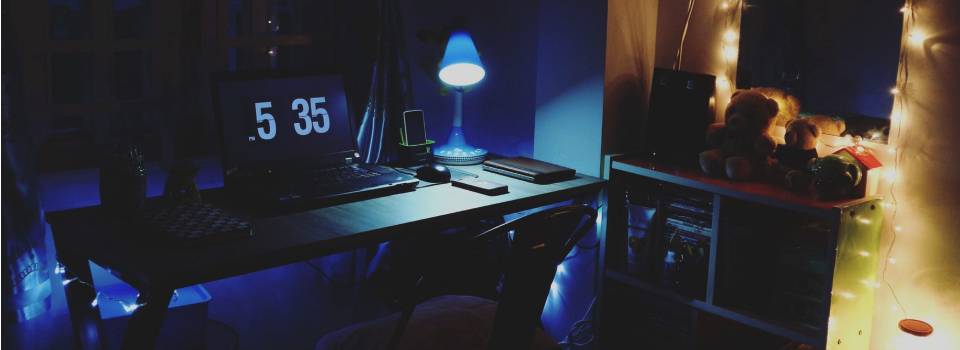Does getting those recommended 8 hours of sleep feel like an impossible challenge? If you regularly use your Mac in the evenings, then blue light might be to blame!
There’s plenty of evidence to suggest that blue light interferes with the body’s natural circadian rhythms, with a recent study suggesting that exposure to blue light before bedtime can significantly shorten your total sleep time and diminish the quality of your sleep. Even if you do manage to drift off, chances are you’ll be waking frequently throughout the night!
The good news is that manufacturers are starting to take this problem seriously, and increasingly we’re seeing features that are designed specifically to limit the amount of blue light being pumped out by our laptops, smartphones and tablets.
As part of macOS Mojave, Apple have released a “Dark Mode” that’s designed to make Mac’s user interface easier on the eye during evening hours. In this article, we’re going to look at what this new Dark Mode is, and how you can use it. Since blue light can have such a negative effect on your health and wellbeing, I’ll also be sharing some additional tips, to make sure you’re exposed to as little blue light as possible.
What is Dark Mode?
At this point, you may be wondering why Dark Mode is getting so much attention, when you’ve been able to change macOS’ screen brightness for years, simply by hitting the “F1” key.
The catch is that no matter how many times you press the “F1” key, there will still be elements of the macOS user interface that pump out significant amounts of blue light, most notably the white backgrounds that are common across many different apps and web pages.
When Mojave’s “Dark Mode” is enabled, your Mac will display a darker, system-wide interface, where those glaring white backgrounds are replaced with black, and white text becomes grey.
How to enable Dark Mode on macOS Mojave
You can activate Dark Mode manually, at any time:
- Select the “Apple” logo from your Mac’s menu bar.
- Navigate to “System Preferences… > General.”
- Select “Dark.”
How to get Dark Mode in Safari
Dark Mode will reduce the amount of blue light you’re exposed to as you move around macOS, but as soon as you launch Safari you run the risk of being exposed to huge amounts of blue light.
Websites aren’t affected by Dark Mode, and since so many web pages have white backgrounds you may find yourself suffering from poor sleep after a late night session browsing the web.
At the time of writing, Apple didn’t have an easy solution to this problem, but there are a few workarounds that can help you browse late into the night, without sacrificing your circadian rhythms.
1. Reader Mode
Safari’s “Reader Mode” extracts the text and images from an article, and then displays this content in an overlay that slides over the current webpage. This streamlined approach is great for removing distractions, including auto-playing video ads, but it also gives you some control over how that website’s content is displayed, including its colour scheme.
Unfortunately, not all web pages support Reader Mode, but you can reduce the amount of blue light you’re exposed to, by switching to Reader Mode where available.
Whenever you’re viewing a page that supports Reader Mode, Safari will display a lined icon in its address bar (where the cursor is positioned in the following screenshot).

To view the current webpage in Reader Mode, give the lined icon a click. Once the webpage is in Reader Mode, you’re ready to give it a dark makeover:
- Find the little “AA” icon in the address bar, and give it a click. This opens a dropdown containing a range of display options.
- Select the darkest circle. This article will now be displayed in Safari’s own version of Dark Mode.

2. Use the Dark Reader browser extension
Maybe your favourite website doesn’t support Reader Mode, or perhaps you’ve never been Safari’s biggest fan.
If you’re a Firefox or Chrome user, then you can automatically invert all the colours within your web browser, using the Dark Reader browser extension.
You can download this browser extension for free, from the Dark Reader website. Once Dark Reader is installed, you can toggle it on and off for all websites, by selecting the Dark Reader icon from your browser’s toolbar, and then dragging the extension’s “On/Off” switch.
Want a more detailed walkthrough of Dark Reader? Check out our “Add a Dark Mode to any website” article.






Add Comment